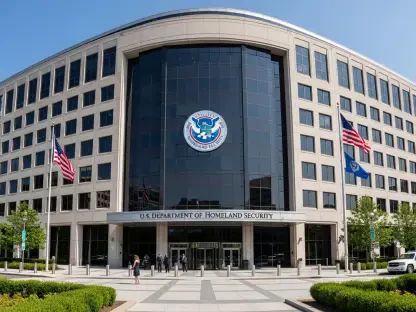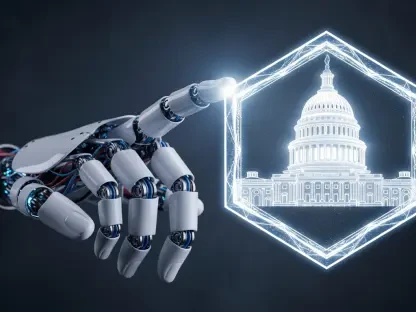In an era where digital threats loom large over national security, the recent cyberattack on the Congressional Budget Office (CBO), a cornerstone of Capitol Hill’s nonpartisan analysis, has sent shockwaves through government circles, exposing alarming vulnerabilities in critical systems. With sensitive economic data and legislative insights at stake, this breach by suspected foreign hackers raises pressing questions about how such an essential institution could be targeted and what must be done to prevent future attacks. This roundup gathers diverse perspectives from cybersecurity professionals, government officials, and policy analysts to dissect the breach, compare opinions on its implications, and explore actionable solutions for bolstering defenses.
Examining the Breach: Perspectives on How It Happened
Methods of Attack: Insights Into Hacker Tactics
Cybersecurity specialists have weighed in on the probable tactics used to infiltrate the CBO’s systems, pointing to sophisticated methods often linked to nation-state actors. Many suggest that phishing campaigns, exploiting human error through deceptive emails, could have provided an entry point for the attackers. Others highlight the potential exploitation of outdated software or unpatched vulnerabilities as a likely avenue for the breach, a common tactic in high-profile hacks.
Another angle discussed is the role of advanced persistent threats, where attackers maintain long-term access to systems to extract data over time. Some industry voices stress that these methods are not new but have grown more refined, often bypassing traditional security measures. This diversity in suspected approaches underscores the complexity of defending against such intrusions.
A third viewpoint focuses on the rapid response needed once a breach is detected. Analysts note that while the CBO took immediate steps to contain the damage, the initial penetration might have been preventable with stronger proactive measures like real-time threat monitoring. This perspective calls for a shift from reactive to preventive strategies in government cybersecurity frameworks.
Why Target the CBO? Opinions on Strategic Motives
The strategic value of CBO data has been a focal point for many commentators. Policy experts argue that the agency’s economic forecasts and budget analyses offer a window into U.S. legislative priorities, making it a prime target for foreign adversaries seeking geopolitical leverage. This data could be used to anticipate policy shifts or influence international negotiations.
Contrasting views emerge on the potential financial motivations behind the attack. Some financial security analysts suggest that stolen data might be sold on dark markets or used to manipulate economic conditions for profit. This angle highlights a dual threat—both political and economic—that amplifies the stakes of protecting such information.
A different take comes from international relations scholars who see the breach as part of a broader pattern of targeting government entities to undermine public trust. They point to similar incidents, like the hack of congressional communications in recent years, as evidence of a coordinated effort to destabilize democratic processes. This perspective urges a wider lens on cybersecurity as a matter of national integrity.
Reactions and Concerns: Voices From Government and Beyond
Congressional and Agency Responses: A Spectrum of Alarm
Government reactions to the CBO hack reveal a shared sense of urgency, though approaches vary. Key congressional figures, particularly from committees overseeing homeland security, have expressed deep concern over the timing of such attacks, especially during periods of governmental strain like federal shutdowns. They advocate for immediate resource allocation to shore up defenses across agencies.
In contrast, some agency leaders within the cybersecurity domain emphasize long-term collaboration over quick fixes. Representatives from federal security bodies stress the importance of cross-agency partnerships to share intelligence and best practices. Their stance is that isolated efforts fall short against the scale of modern cyber threats, pushing for a unified front.
A third opinion from legislative staffers focuses on transparency with the public. They argue that while investigations must remain confidential to avoid tipping off adversaries, regular updates on progress and preventive measures are essential to maintain trust. This viewpoint highlights a balance between security needs and public accountability, adding a nuanced layer to the response debate.
Evolving Cyber Threats: Broader Implications for Government Security
Security thought leaders have noted the increasing sophistication of cyberattacks on government entities, viewing the CBO breach as a symptom of a larger trend. Many point to the persistence of foreign adversaries who leverage vast resources to exploit even minor vulnerabilities. This observation calls attention to the need for continuous adaptation in defense strategies.
Another perspective examines how domestic challenges, such as budget constraints or staffing shortages, exacerbate digital risks. Some policy analysts argue that inconsistent funding for cybersecurity initiatives creates gaps that hackers readily exploit. They suggest that sustained investment, starting from this year through at least 2027, is critical to building resilient systems.
A contrasting opinion focuses on the global context of cyber warfare, with experts warning that attacks on institutions like the CBO are often test runs for larger campaigns. They urge government bodies to learn from international allies facing similar threats, advocating for global cooperation to counter shared adversaries. This broader outlook reframes the incident as part of an interconnected digital battlefield.
Strengthening Defenses: Collective Tips for the Future
Practical Steps: Expert Recommendations for Government Agencies
Cybersecurity professionals offer a range of actionable tips for fortifying government systems post-breach. A common recommendation is the adoption of advanced threat detection tools that use artificial intelligence to identify anomalies before they escalate. This technology-driven approach is seen as a cornerstone of modern defense mechanisms.
Another frequently cited suggestion is the importance of regular system updates and patch management to close known vulnerabilities. Many experts emphasize that outdated software remains a primary entry point for hackers, and routine maintenance must be prioritized. This practical step, though basic, is often overlooked under resource constraints.
Staff training also emerges as a critical focus area, with specialists advocating for ongoing education on recognizing phishing attempts and other social engineering tactics. Some suggest simulated attack exercises to test employee readiness, arguing that human error remains a significant weak link. This blend of technology and training forms a comprehensive defense strategy in expert discussions.
Beyond the CBO: Applying Lessons Across Public Infrastructure
Analysts stress that the lessons from this incident extend far beyond a single agency, urging a holistic approach to public infrastructure security. Many recommend standardized cybersecurity protocols across all government levels to ensure consistency in preparedness. This systemic view aims to eliminate weak points that could be exploited in interconnected networks.
A differing opinion highlights the role of public-private partnerships in enhancing defenses. Some industry leaders propose that government agencies collaborate with tech firms to access cutting-edge solutions and expertise. They argue that leveraging private sector innovation could accelerate progress in safeguarding critical systems against evolving threats.
Yet another perspective focuses on legislative action to enforce stricter cybersecurity mandates. Policy advocates suggest that laws mandating minimum security standards for federal entities could drive accountability. This call for regulatory oversight adds a structural dimension to the conversation, pushing for systemic change alongside technical upgrades.
Reflecting on the Roundup: Key Takeaways and Next Steps
Looking back, this compilation of insights paints a vivid picture of the multifaceted challenges posed by the CBO cyberattack. Discussions ranged from dissecting the sophisticated tactics likely employed by foreign hackers to debating the strategic motives behind targeting such a vital institution. Varied reactions from government officials and experts revealed a spectrum of urgency, from immediate fixes to long-term collaborative strategies, while the evolving nature of cyber threats underscored a pressing need for adaptation.
Moving forward, actionable steps emerged as a unifying theme, with recommendations spanning advanced technology adoption, staff training, and cross-sector partnerships. A critical next consideration is for policymakers to prioritize legislative reforms that enforce robust security standards across government entities. Agencies must also explore international alliances to counter global cyber threats collectively. These steps, combined with sustained investment in digital defenses, offer a path toward securing national infrastructure and preserving the integrity of democratic processes against relentless digital adversaries.









